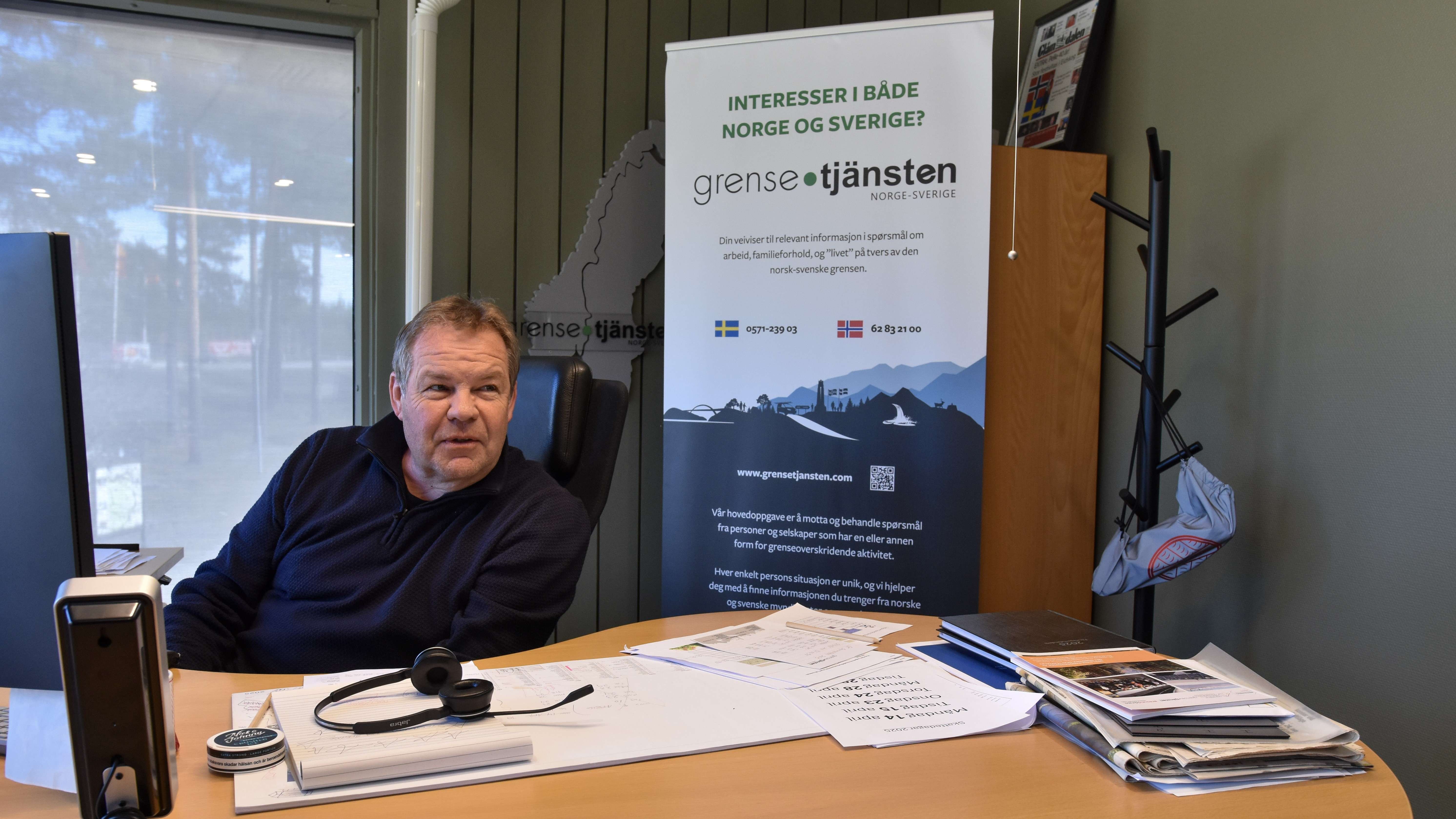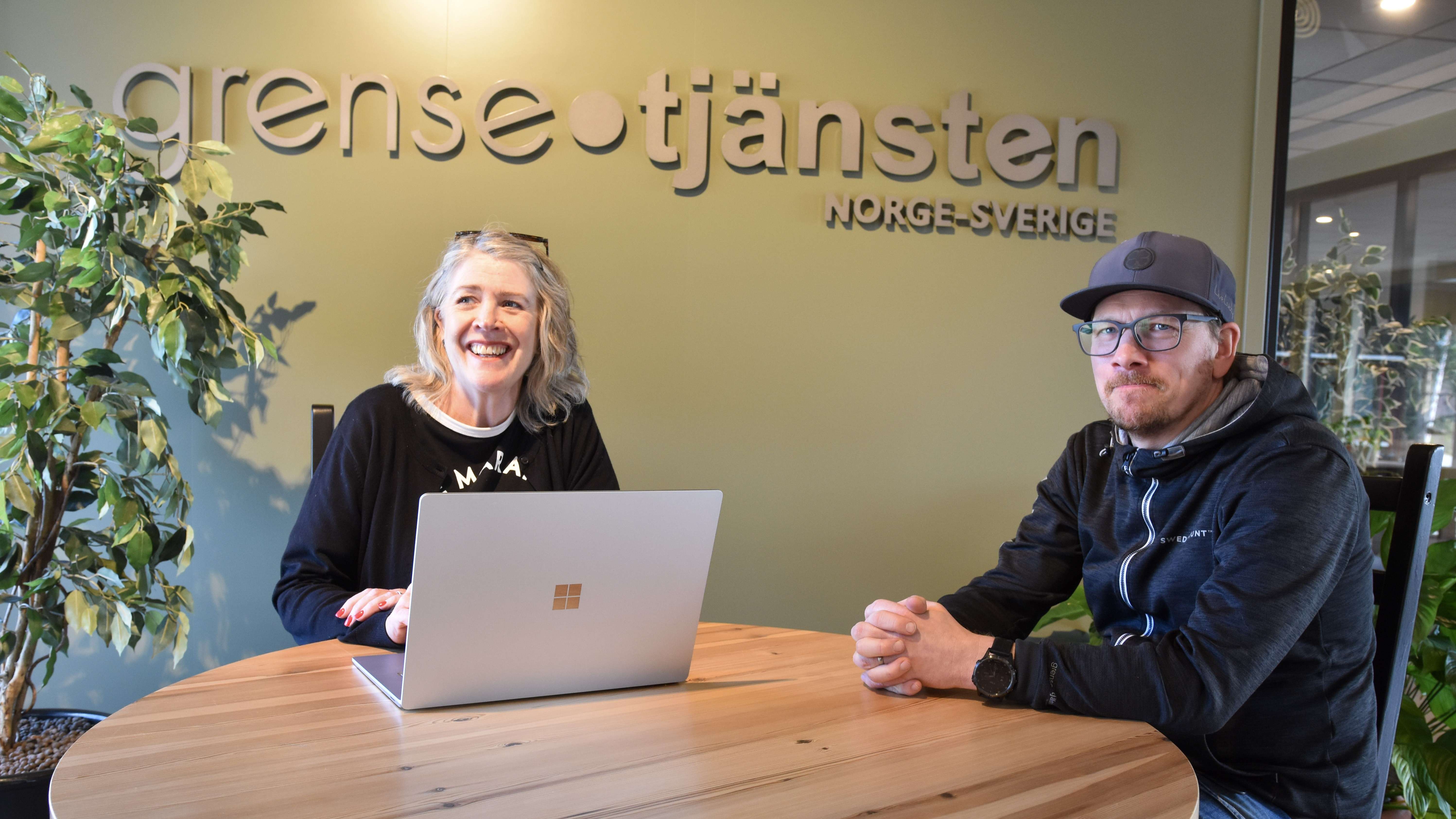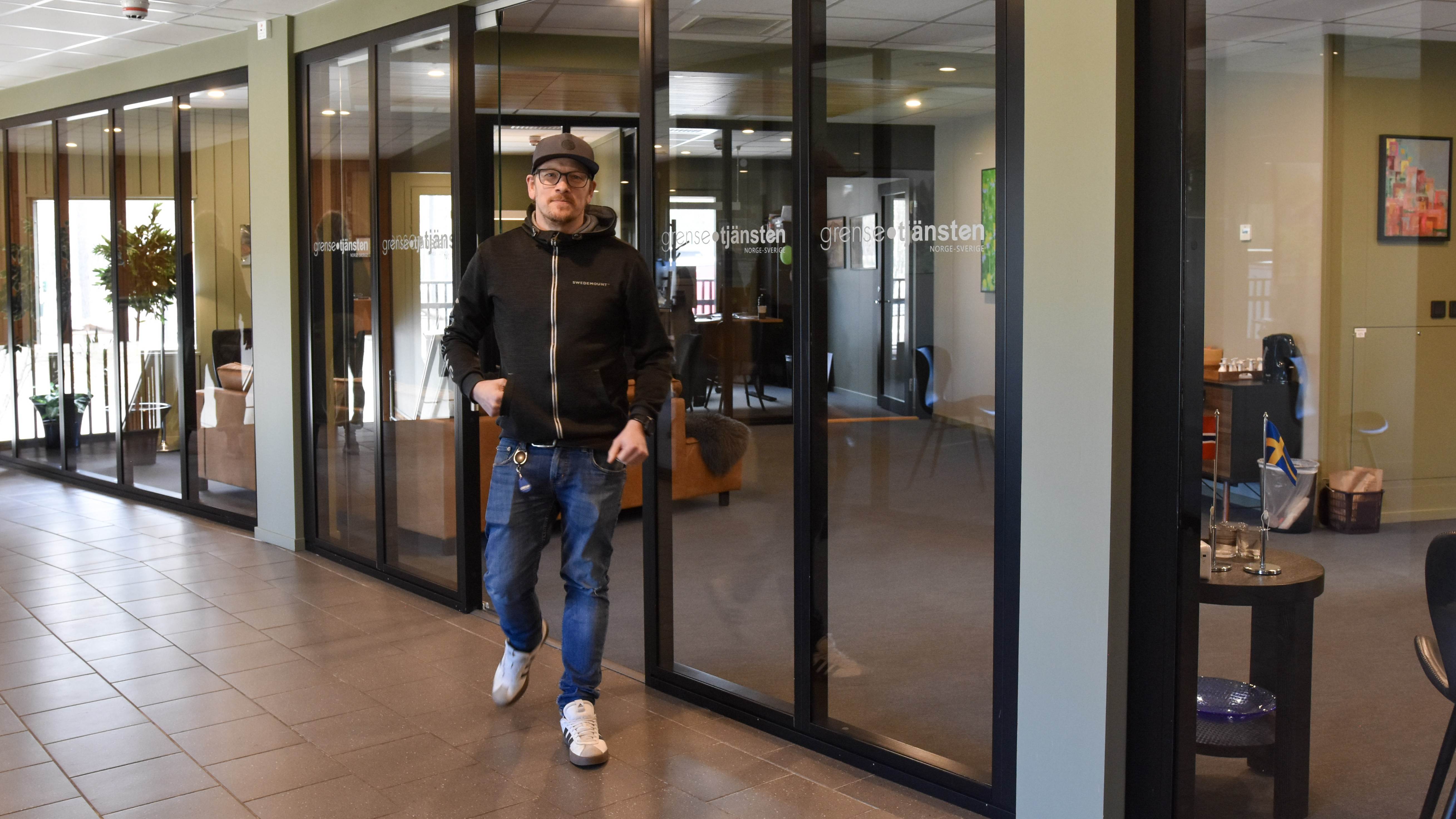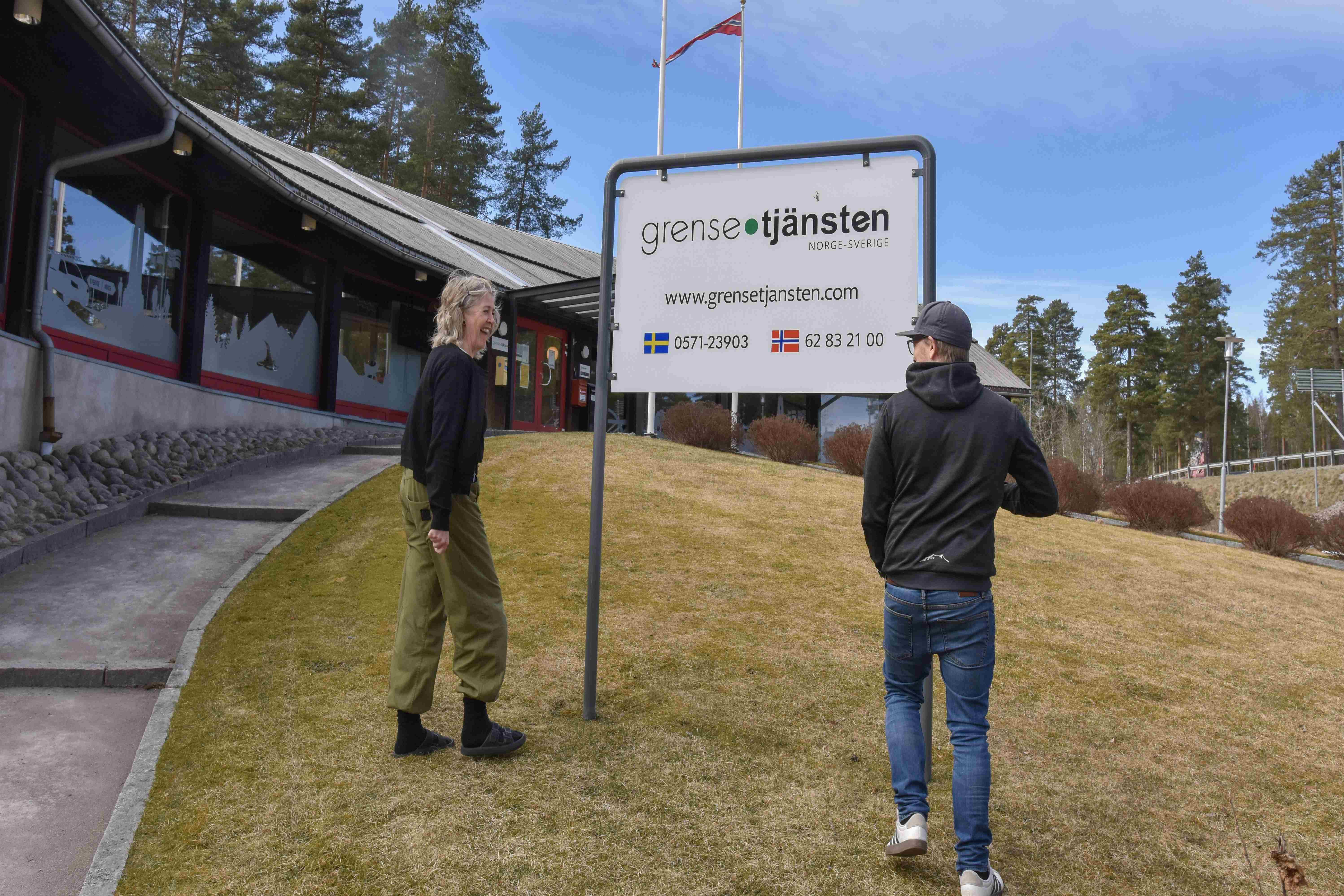The Border Service: It should be easy to get it right
For nearly 30 years, Grensetjänsten Norge–Sverige in Morokulien has provided help for people and businesses crossing the border. Their motto: “It should be easy to get it right”.
Morokulien, where you find the peace memorial and Norwegian and Swedish flags waving side by side, is also the site of a small but strong Norwegian-Swedish collaboration.
Here, right on the border, Grensetjänsten Norge–Sverige (the Border Service Norway-Sweden) has helped individuals and businesses thrive across the national borders since 1997.
What began as a short-term Interreg project has turned into a permanent and important information and advisory service.
One office, two countries – many systems
Trond Erik Grundt has been there from the beginning and is now the managing director. After 27 years working for the border services, he can conclude that they are still needed.
Eight people now work at Grensetjänsten Norge – Sverige in Morokulien. Kikki Lindset has been there since 2003, nearly as long as Grundt. Oskar Danielsson joined in 2013. Both work on the Swedish side.

Trond Erik Grundt from Norway has been here from the start 27 years ago.
The border service has staff in both Norway and Sweden. Three are linked to the Värmland County Administrative Board, two are employees of the Norwegian Labour and Welfare Administration NAV, two work for the Swedish Public Employment Service and one is employed by Eidskog municipality.
“We have different working hours, wage levels and holidays, but it works. There have never been any conflicts,” says Kikki Landset with a smile.
The border service is characterised by continuity and experience.
“You don’t learn this stuff at university,” says Lindset.
“It’s about being curious and engaged and understanding how systems impact individuals and businesses,’ says Danielsson.
Helping many
The office gets both physical and digital requests. Personal guidance is still key. People pop in nearly every day, both private individuals and business representatives who “just have a quick question”.
In 2024, more than 16,000 people received some form of assistance. Nearly 300,000 visited the website.

Kikki Lindset and Oskar Danielsson believe it is important to be curious when working at the border station. You must be able to ask: Why are things this way? And then try to find an answer.
“We are now back on the same activity level we had before the pandemic,” says Kikki Lindset.
One of the most important questions she asks herself is: “Should I answer what you ask, or do you want to know what you ought to consider?”
“Sometimes we have to slow people down a little before they make a choice they don’t understand the consequences of – for instance moving across the border without considering their social security entitlements or pension,” says Danielsson.
Many argue that it can be difficult to get hold of authorities and that distances – both geographical and bureaucratic – feel big. This could explain why they come to us instead, believe Lindset and Danielsson.
Four key areas – many questions
The border service covers a broad range of issues which can be divided into four key areas:
- Information – on rights, obligations, the consequences of moving or working across the border.
- Labour market – offering advice on employment issues, authorisations, social security rights and more.
- Border obstacles and simplifications – systematic work to identify and remove obstacles in regulations and in practice.
- Coordination – cooperation with authorities and cross-border working groups in Norway, Sweden and the other Nordics.
Questions range from taxation, sick pay and pensions to how to set up a business and recruit across the border.
According to Oskar Danielsson, private individuals make up around 70 per cent of the inquiries, while businesses are behind the remaining 30 per cent. But the time spent on each is reversed.
“Business issues are often more complex and time-consuming. This is rarely about one question but several. And it is not always legislation that is the main problem, but rather interpretation and implementation,” he says.

Oskar Danielsson likes to get to the bottom of things. He does not give up before he figures out how the rules work.
Swedes in a majority
The majority of requests come from Sweden – around 70 per cent are from Swedish citizens and 30 per cent from Norwegians.
“You might ask yourself why this might be the case. We don’t have one clear answer,” says Danielsson.
“Is this about perceptions or mental barriers? Is it an ingrained perception that taxes are higher and wages lower in Sweden than in Norway? This is not necessarily correct.”
He points to the fact that the current economic situation and labour market developments in Sweden and Norway really ought to make it more desirable for Norwegians to consider working in Sweden.
“We see a tendency of more Norwegians crossing the border to work, so perhaps we are about to experience a shift,” says Danielsson.
They both argue that there are considerable advantages to having a cross-border labour market:
- The local area stretches across two countries
- Opportunity to take advantage of economic fluctuations
- International experience without having to move far
- Access to a market near the EU’s external border
A border-regional labour market
The border services work on the basis that Norway and Sweden share a common labour market in the border area. At best, this makes the region more robust in the face of economic fluctuations and increased labour mobility.
In reality, however, several structural and technological obstacles make border mobility challenging.
Some of the challenges that are highlighted include:
- Double bureaucracy for both employers and employees.
- A lack of digital coordination and different electronic ID infrastructure.
- A lack of statistics and a common data foundation for cross-border commuting.
- A lack of understanding of this group’s particular challenges.

Grensetjänsten Norge – Sverige sits on the border between Norway and Sweden, as the name suggests. It has a Norwegian and Swedish address, in Magnor and Morokulien.
One important aspect of the border service’s brief is to identify and highlight border obstacles.
“We are ‘the ear to the ground’,” says Lindset.
Most of the challenges facing cross-border commuters centre on taxation and electronic ID. Tax systems in particular can appear complicated for those who live in one country while working in another.
“If we could find permanent solutions to these two issues, much of the need for guidance would be superfluous. It would almost put us out of a job,” says Danielsson with a smile.
- Happy to help
-
Kikki Lindset and Oskar Danielsson are two of the eight employees at Grensetjänsten Norge-Sverige in Morokulien.
- Information on the border
-
The three cross-border information services Grensetjästen Norge-Sverige, Gränstjänsten Sverige-Finland-Norge and Øresunddirekt are particularly important in the efforts to address border obstacles in the Nordic region.
They are organised in different ways, with participation and funding from different authorities, regional actors and in some instances municipal actors.
All three are financed by the Nordic Council of Ministers. The information services share three core tasks: information, integration and border obstacle work.
In 2024, the cross-border information centres and Info Norden had more than 3.9 million online visitors, 41,500 in-person requests and participated in nearly 500 seminars and information meetings.
 Follow us on Facebook
Follow us on Facebook
